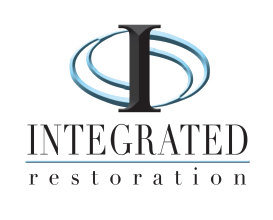Hail Damage in Cleveland: What Homeowners Should Check After a Storm
Last week’s hailstorm across Northeast Ohio left many homeowners wondering: did my roof take a hit? Even small hail can cause costly, hidden damage that isn’t always visible from the ground. Bruised shingles, cracked flashing, and dented gutters can all lead to leaks, mold, or structural issues down the road.
At Integrated Restoration, we’ve helped Cleveland homeowners inspect, repair, and restore storm-damaged roofs for years. Here’s how to recognize signs of hail damage, why quick action matters, and what steps to take next to protect your home before winter weather sets in.
Signs of Roof Hail Damage (You Might Not Notice at First)
Hail doesn’t need to be large to do damage — even half-inch stones can weaken your roof. Some signs are obvious, but many go unnoticed until leaks start showing inside.
Check for:
Dents or bruising on shingles: These soft, dark spots indicate broken shingle matting under the surface.
Missing granules: Look for bare spots where shingle texture feels smooth or patchy.
Cracked flashing or vents: Impact damage around chimneys, skylights, and vent caps is common.
Gutter dents or siding marks: Dented metal gutters or chipped paint often signal roof impacts above.
If you spot any of these warning signs, schedule an inspection with our Residential Roofing & Hail Damage team. We’ll assess the full extent of damage and provide a plan for fast, reliable repairs.
Why Prompt Inspections Matter
Hail damage might look cosmetic, but it can quickly lead to roof leaks, insulation damage, and even mold growth inside your home.
Acting fast matters because:
Early detection prevents bigger repairs. Cracked shingles can allow water to seep under your roof deck, leading to hidden rot and ceiling stains.
Insurance has time limits. Most homeowners’ policies require you to report storm damage within a set window — sometimes as short as 30 days.
Weather exposure worsens damage. Another round of heavy rain or snow can push water through weakened shingles.
At Integrated, we treat every inspection with urgency and care. As a family-owned, Cleveland-based company, we pride ourselves on a customer-first approach — offering transparent recommendations, clear communication, and even financing options for out-of-pocket repairs.
How Insurance Works After a Hailstorm
Navigating an insurance claim can feel overwhelming, but you don’t have to handle it alone. Here’s how the process typically works:
Document the damage — Take photos of your roof, gutters, and yard immediately after the storm.
Contact your insurance provider — Report potential hail damage as soon as possible to start your claim.
Schedule an inspection — Your adjuster will evaluate the property and may request documentation from a restoration company.
Repair and restore — Once your claim is approved, schedule repairs with a licensed restoration team.
Integrated Restoration coordinates directly with adjusters to ensure inspections, documentation, and restoration align smoothly — but we never interpret policies or file claims on your behalf. Learn more about how we support our customers throughout this process on our Insurance Support page.
Metal Roofs, Gutters & Siding — Don’t Forget the Rest
Roofs aren’t the only part of your home that takes a beating during a hailstorm. It’s just as important to inspect:
Metal roofs for dings or coating loss.
Gutters and downspouts for dents that could restrict drainage.
Siding for cracks, chips, or missing panels.
Windows and doors for broken seals or frame damage.
Our Exterior Restoration team can repair these areas quickly to prevent water intrusion and maintain your home’s curb appeal.
When to Call a Professional
If you notice visible roof dents, ceiling water marks, or missing shingles, don’t wait for the next storm to hit. Professional inspections go beyond what’s visible — detecting soft spots, granule loss, and hidden moisture before leaks start.
Integrated Restoration offers 24/7 emergency response for storm and hail damage across Cleveland and Northeast Ohio. We’ll assess your property, document damage for your insurer, and make sure your roof is ready for winter weather.

